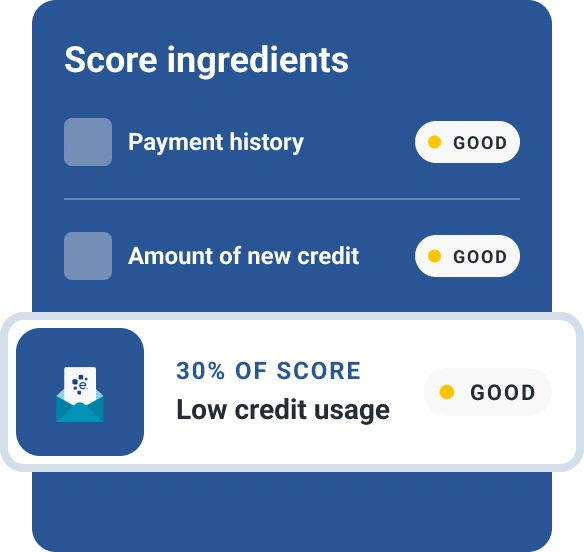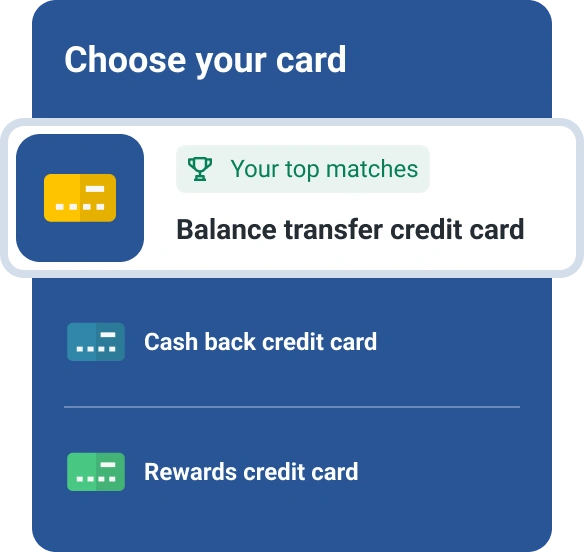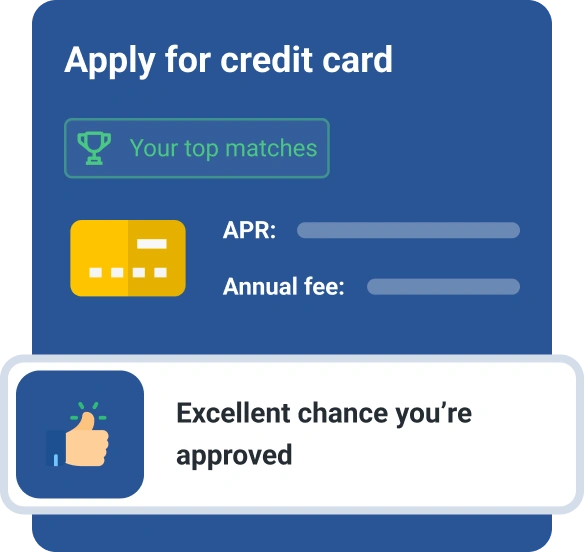How to Pay Off $50K in Credit Card Debt
Quick Answer
You can tackle your credit card debt with the following steps:

On average, Americans carried $6,501 in credit card debt in 2023, according to Experian data. However, some credit card users have much more than that—in rare cases, $50,000 or more.
Getting rid of $50,000 or more in credit card debt can feel like an insurmountable task. However, with the right strategy, some good financial tools and time, it's possible to achieve your goal of becoming debt-free.
How to Pay Off $50,000 in Credit Card Debt
Every financial situation is different, so there's no single best way to pay off credit card debt, especially when you have a lot of it. Here are some things to consider before creating a plan to tackle your credit card balances.
1. Reevaluate or Create a Budget
Paying off a mountain of credit card debt will require dedication, consistency and extra payments. To make the last one possible, it's important to understand how much money you're working with every month and where it's going.
If you already have a budget in place, reevaluate it to see how you're spending your money and where you can cut back to prioritize paying off your debt. If you don't have a budget, however, creating a new one can give you a better sense of where your money is going and also empower you to prioritize your debt goals over certain discretionary spending.
What's more, creating a budget and sticking to it is one of the best ways to break bad money habits and begin the task of getting back on track financially.
Learn more: How to Make a Budget
2. Set Concrete Goals
Paying off credit card debt can be tricky because credit cards don't have a set repayment term like an installment loan. Instead, you can pay whatever you want as long as you meet the minimum amount due every month, which is usually a small percentage of your balance.
Instead of allowing the minimum payment to guide your repayment strategy, set a goal of your own for when you want to pay off the last dollar. Before you move forward, though, make sure it's reasonable. Using a credit card payoff calculator can help you get a feel for how long it might take based on your specific situation and ability to pay.
Learn more: How to Set (and Reach) Your Financial Goals
3. Look for Ways to Cut Expenses
Downsizing your lifestyle may not be ideal, but it could be key to paying off your debt and keeping you debt-free in the future. Here are some potential ways to reduce your monthly costs:
- Look for a less expensive place to live
- Take on a roommate
- Downsize your vehicle
- Refinance your mortgage or auto loan if you can get a lower rate
- Shop around for car insurance and homeowners or renters insurance
- Cut out or share streaming subscriptions you rarely use
- Eat out less often
- Cut back on live entertainment
- Buy generic brands at the grocery store
- Utilize coupons to maximize savings
- Put a stop to impulse spending
Ultimately, your options for cutting back will depend on your budget and lifestyle preferences. Cutting back too much to live a Spartan lifestyle, however, may make it difficult to maintain your motivation.
Learn more: Simple Ways to Save Money
4. Increase Your Income
In addition to reducing expenses, look for opportunities to increase your income. How you do that will depend on your current work situation and how much free time you have. Here are just a few options to consider:
- Ask for a raise at work
- Commit to more overtime hours
- Take on a part-time job
- Look for a side hustle
Increasing your income even by a few hundred dollars a month could make a huge difference in the long run. Just be sure to avoid burning yourself out, which could derail your progress.
5. Choose a Debt Payoff Method
You should always make at least the minimum monthly payment on each of your credit cards to avoid late payments, which could damage your credit. To work toward paying off a large balance, though, consider using the debt snowball or debt avalanche approach:
- Debt snowball method: With the debt snowball method, you'll make the minimum monthly payments on all your credit card accounts and apply any additional payments you can afford to the account with the lowest balance. Once that balance is paid off, you'll take all the money you were paying toward it every month and apply it to the card with the next lowest balance. You'll continue this strategy until all your debts are paid in full.
- Debt avalanche method: The debt avalanche method follows the same process as the debt snowball approach in every way except for one: Instead of targeting your account with the lowest balance first, you'll focus on the account with the highest interest rate.
Neither approach is inherently better than the other, so you'll need to consider your situation and goals to determine which one is the right fit for you. In general, the debt avalanche method will save you more in interest because you're paying off higher-interest accounts first. However, it can take longer to pay off the first debt if it's one of your larger balances, so it may require more discipline.
On the flip side, the debt snowball method will give you wins early on because you're eliminating smaller balances. If you're struggling to stay motivated, this option may be worth it, even if you won't maximize your interest savings.
Learn more: What's the Best Strategy to Pay Off Debt?
Other Options for Paying Off Debt
In addition to the debt snowball and avalanche methods, consider other ways you can eliminate your credit card debt more efficiently and save money along the way.
Ask for a Lower Interest Rate
You may be able to negotiate a lower interest rate on your credit card accounts with your credit card issuers. There's no guarantee you'll succeed, and you may only get a lower rate temporarily.
However, it can be worth it if it helps put more of your payments toward your balance rather than interest charges, even if it's only for a short period of time.
Look Into a Debt Consolidation Loan
Debt consolidation loans are personal loans you can use to pay off credit card debt. On average, personal loans carry lower interest rates than credit cards, so you may be able to save some money this way.
What's more, personal loans have set repayment terms, which means you know exactly when you'll be finished paying off your debts—and you'll have a single set monthly payment to help you manage your monthly finances. If you're having trouble sticking to your payment plan, a set term can help.
That said, you may not be able to get an affordable debt consolidation loan if your credit score is in bad shape. Also, the monthly payment on the loan will likely be larger than the minimum payments on your credit cards. You can use a personal loan calculator to run the numbers to ensure it's a good fit for your situation.
Learn more: How to Consolidate Debt With Bad Credit
Consider a Balance Transfer Credit Card
Another way to consolidate your debt and save money is through a balance transfer credit card. These cards are specifically designed to pay off other credit card balances and typically provide an introductory 0% APR promotion on those balances, often for a year or longer.
While you likely won't be able to put $50,000 on a balance transfer card, you could use it for some of your debt, paying off the transferred balance before the intro APR period ends. Depending on how much debt you can move and pay off, you could save hundreds or even thousands of dollars in interest.
Note, however, that many balance transfer cards charge an upfront balance transfer fee—typically 3% or 5% of the transfer amount. You'll also typically need good or excellent credit to qualify.
Ask Family or Friends for Help
If you have a good relationship with family members or friends, you may consider asking them for a small loan to help you pay down your debt. Keep in mind, though, that borrowing from family or friends can be a tricky situation to navigate.
To prevent possible misunderstandings or resentment, be transparent about your situation and needs. You'll also want to draw up an official loan agreement with repayment terms and possible interest. Then, make it a priority to pay back the debt on time or early.
How Long Will It Take to Pay Off $50,000 in Credit Card Debt?
The amount of time it'll take you to pay off $50,000 in credit card debt will depend on your balances, interest rates and monthly payments.
To give you a sense of what to expect, let's say you need to pay off an even $50,000 in credit card debt. With the August 2024 average credit card interest rate of 23.37%, according to the Federal Reserve, your minimum payment would be $1,459.
Using Experian's credit card payoff calculator, here's how long it'd take with the minimum payment compared to $1,600 in monthly payments.
| Minimum Payment Only | $1,600 Monthly Payment | |
|---|---|---|
| Time to pay off debt | 57 months | 49 months |
| Total interest paid | $32,198.10 | $27,003.57 |
| Total amount paid | $82,198.10 | $77,003.57 |
Consider Debt Relief Options
If you're having a hard time making progress with your credit card debt, consolidation options and payoff methods may not be enough. In that case, it may be worth looking into credit counseling, debt settlement or even bankruptcy.
Credit Counseling
Credit counseling can provide you with some relief through a debt management plan. For a modest upfront and monthly fee, you'll make a single monthly payment to the credit counseling agency for all your bills, and the agency will distribute the funds to your creditors.
In many cases, credit counselors can also negotiate lower interest rates and even monthly payments with your creditors. However, there's usually a monthly fee, and you'll be required to close your credit cards, which can negatively impact your credit until you pay them off.
Consider credit counseling if you've exhausted all your other options but want to avoid the damage to your credit score that debt settlement and bankruptcy would cause.
Debt Settlement
Debt settlement is the process of negotiating to pay less than what you owe on your accounts. It's typically best done through a debt settlement company, which will charge you a fee for the service. It's important to keep in mind, though, that the process can cause significant damage to your credit score.
This is because you'll be instructed to stop paying your bills and contribute to an account with the debt settlement company instead. Once you've reached a certain balance, the company will negotiate with your creditors. However, with tens of thousands of dollars in credit card debt, it can take a long time to reach this goal.
Debt settlement is generally not a good idea if you've been keeping up with your payments until now. If you're already significantly behind on your bills, however, the damage may have already been done, and debt settlement may be a viable option.
Bankruptcy
Filing for bankruptcy is typically a last resort with any form of debt. But if your financial situation makes it impossible to pursue any other path to eliminating your debt, bankruptcy may be the only option left.
If you're considering bankruptcy, note that it could damage your credit significantly for several years to come. Consult with a credit counselor or bankruptcy attorney to determine if it's the best fit for you.
Learn How to Use Your Credit Responsibly in the Future
Paying off $50,000 in credit card debt is no easy task, and no matter how you accomplish it, opportunities are available to improve your overall financial situation going forward. While working toward your goal, stop using your cards to avoid taking one step forward and two steps back.
Once you've accomplished your goal of paying off your credit card debt, it's important to be proactive about credit card habits to make sure you don't end up in the same situation again.
For starters, make it a goal to check your credit report and FICO® ScoreΘ regularly, which you can do for free with Experian. Your credit score is an indicator of your overall credit health and can give you clues about where you stand. And your credit report will provide the information you need to determine which areas to address, if needed.
If you still have your credit cards or can qualify for a new one, use them sparingly and pay your bill on time and in full every month. This can help establish a positive payment history and show a good credit utilization rate, both of which can help improve your credit score.
Find out what debts you owe
Your free credit report lists all your debts, such as credit card balances and loans, helping you create a plan to tackle your debt and improve your financial health.
Review your creditAbout the author
Ben Luthi has worked in financial planning, banking and auto finance, and writes about all aspects of money. His work has appeared in Time, Success, USA Today, Credit Karma, NerdWallet, Wirecutter and more.
Read more from Ben

